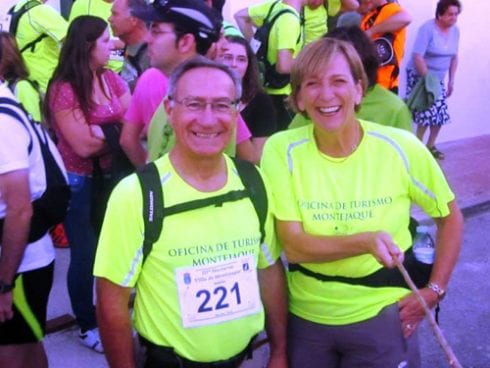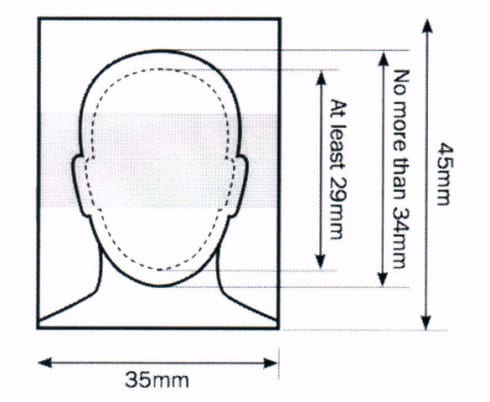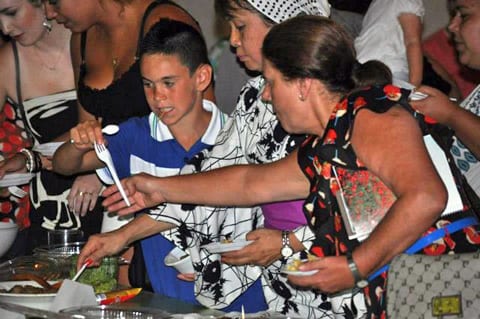Admire the skill of the matadors or deplore the cruelty to the bulls; a first visit to a bullfight can bring out both of these emotions. We cheered at the swift finish of the first bull. But we booed at the prolonged ending of the next.
Death in the afternoon.
“DID YOU ENJOY YOUR FIRST BULLFIGHT?” I was asked.
“Well,” I replied, “I have to try and find the words to describe the experience. I’m not sure if ‘enjoy’ is quite right.”
My husband and I were offered free tickets (and coach transportation) to a bullfight in Malaga, and decided we would like to go (“When in Rome…” and all that). Accompanied by our visiting friend Mischa, we joined the villagers on the coach for the 1.5-hour journey to the coast. We were delighted to see our neighbour Philip, who has, to date, attended more than 310 bullfights.
“At least he can tell us what’s going on,” I said.
On arrival at the bullring, the crowd atmosphere outside was fantastic, and we enjoyed watching a splendid dance demonstration by stunning senoritas and caballeros. After drinking a cerveza in a bustling bar, and buying a bocadillo for later consumption, we headed off to find our seats in the bullring … only to discover that Philip was sitting nowhere near us.
“Oh, well, we’ll work it out for ourselves,” we said.
(At this point, I must confess that we did not quite ‘work it out for ourselves’ … but, thanks to research at http://en.wikipedia.org/wiki/Spanish-style bullfighting, I am able to continue with the story).
Spanish-style bullfighting is called a corrida de toros. In a traditional corrida, there are three matadors (not toreadors; the word doesn’t exist in Spanish. ‘Torero’ is the term for any bullfighter). Each matador fights two out of a total of six bulls, all of which are at least four years old and weigh up to 600 kg (1,300 lbs).
The first bull came into the ring, and four men with magenta and gold capes started running around, waving said capes, and leaping behind wooden fences as they were rushed by the bull.
“I thought the cape was supposed to be red,” said Mischa.
“So did I,” I replied.
(In fact, the red colour of the cape is just traditional, as bulls are actually colour blind; they attack moving objects. Apparently, the real reason a red coloured cape is used is that any bloodstains on it will be less noticeable … lovely. The magenta and gold capotes are working capes to test the new bull).
The four men who were first into the ring were the matador and his three banderilleros. In this first stage of the bullfight (there are three stages), the matador observes how the bull charges as he is played by the banderilleros. He also notes vision problems, unusual head movements, or if the bull favours a particular part of the ring (its perceived territory). A bull trying to reach its territory is often more dangerous than a bull that is attacking the cape directly.
After the bull had made several runs at the banderilleros, two men, riding heavily padded and blindfolded horses, came in, taking up positions on opposite sides of the ring. These were the picadores, whose role is to jab the bull with the lances they carry.
We were amazed at how aggressively the bull wanted to attack the picador’s horse. It just buried its horns into the horse’s padded side and tried to tip it over. The picador managed to stay in the saddle (difficult to do, as his feet were in stirrups covered with huge metal overshoes), and stabbed at the mound of muscle (morrillo) on the bull’s neck. The reason for doing this is to reduce the bull’s charge and to lower its head for the subsequent kill. It also led to its first loss of blood.
The purpose of the picador is to fatigue the bull’s neck muscles and general stamina as it tries to lift the horse with its head, and to lower its head in preparation for the second stage of the corrida. If the picador does his job well, the bull will hold its head and horns lower during the following stages of the fight, making it more controllable while the matador performs the passes of modern bullfighting.
Next into the ring were two banderilleros (without their capes), each of whom attempted to plant two barbed sticks into the bull’s shoulders. (The barbed sticks are called banderillas, little flags, as they are decorated with paper in the local colours). To us novices at the bullfight, we decided this looked like the most dangerous profession so far. The bull literally charged at the banderillero who was waving his sticks in the middle of the ring; at the last minute, with a neat sidestep, he planted them into the bull’s shoulders. (This is to further weaken the enormous ridges of neck and shoulder muscle, while also frequently spurring the bull into making more ferocious charges).
Not both of the banderilleros were successful at getting their banderillas to stay in place, but the bull was looking quite festive (and still rather lively) at the conclusion.
In the final stage, the matador entered the ring alone with a small red cape in one hand and a sword in the other.
“Aha! Finally the red cape,” said Mischa.
This, we supposed, is what we had really come to see: the matador using his cape to attract the bull in a series of passes, demonstrating his control over it and risking his life by getting especially close to it. There were several flurries and passes, with the crowd shouting “¡Ole!” at what we assumed were the appropriate moments; then the bull suddenly got a second wind, or the matador’s attention somehow wavered, and the bull gored him in his inside thigh, lifting him into the air and making him lose his shoes.
“Ooh, ow!” we said … not “¡Ole!”
Impressively (after taking a bit of a breather), the matador carried on, in his stockinged feet, to perform the escotada: the act of thrusting the sword between the bull’s shoulder blades and through its aorta or heart. A clumsy estocada that fails to give a ‘quick and clean death’ will often raise loud protests from the crowd.
This matador’s escotada was superb … he plunged in the estoca (sword) and the bull dropped where he stood, instantly dead. The crowd applauded wildly, I shed a quick tear for the bull, and we watched the matador take his bow and limp.
The second, third, fourth, fifth and sixth bullfights followed the same pattern as the first, but there were no further injuries. We saw some very clumsy estocadas, however. If the first act of thrusting the sword is unsuccessful, the matador must cut the bull’s spinal cord with a second sword, to kill it instantly and spare it pain. Although this blow is usually fatal, more than once we had to watch the coup de grâce delivered by a puntillero, who used a dagger to further pierce the spinal cord. At one point, I was reminded of the shower scene from “Psycho”, as the puntillero stabbed repeatedly at the bull to make it go down. Needless to say, there were loud protests from the crowd, the matador slunk off in disgrace, and I realised why some people perceive bullfighting as cruel.
We met up with Philip afterwards, and asked him if we had seen a typical bullfight.
“Bad bulls,” he commented – meaning that none of them was really aggressive or feisty enough to test the matador’s courage or demonstrate his skills at passing.
So, did I enjoy my first bullfight? I found it exciting, enlightening, thrilling, breathtaking (“Ooh, ow!”) and mesmerising. Would I go again? Probably, if only for the chance to see a bull pardoned – which does happen, ‘tho rarely. In more than 310 bullfights (1,900 bulls), Philip has seen this happen only once; it occurs when the bull is so brave that the crowd petitions for it to be spared. If the president and bull breeder agree, the bull is then ‘put to pasture’ and has the opportunity to sire others … of equal quality, it is hoped.
I think both the bull and I would enjoy that.
P.S. Many thanks to Philip for correcting some errors in this story; perhaps Wikipedia should consult him to get some of its facts totally accurate?








“We cheered at the swift finish of the first bull. But we booed at the prolonged ending of the next.”
Great logic there.
“and I realised why some people perceive bullfighting as cruel.”
Yes, those people that have a soul.
Is the Olive Press sending all of its writers on some sort of warped initiation ceremony with all these bullfights?
Not bothered one way or the other.I would not go to a Bullfight as it does not interest me.If however the Spanish wish to keep their traditions so be it.After all it is THEIR country and we are still guests here regardless of how long you have lived here.They were bullfighting before we came here and to complain is the same as the people who buy a house near heathrow and then moan about the noise.
duh.
This is an interesting article which provides much food for thought.
As the bullfight season in Spain draws to a close, never before has so much controversy raged about this centuries-old Spanish spectacle. Banned in Catalonia from the start of 2012, the question remains:
Should bullfighting be banned on the grounds of cruelty or celebrated as a spectacle of skill and courage which is part of the cultural tradition of Spain?
A sometime fan, I attended my first corrida at the age of 21 and my most recent this September when I was 61. My first was at the San Fermín festival in Pamplona and was exhilarating; the last was a novillada in Ronda and it was most unsatisfactory. I am beginning to question my support for this Spanish national cultural fiesta.
English-speaking animal lovers have been criticising this most-Spanish of cultural pastimes for decades. Why? Is it because in the English-speaker’s psyche, the notion of a fight or contest is ingrained, because of the mistranslation of the Spanish terminology associated with los toros? In Spanish, you see, the concept of “fight” or “contest” or “struggle” does not occur, because to the Spanish los toros isn’t a fight at all – it’s nothing more nor less than a brightly-coloured spectacle, designed to pit the bravery, skill and guile of the torero against the brute strength, power and hostility of the toro bravo.
For example, what we know as the bullfight is la corrida de toros (bull-running), a bullfighter is a torero (a person who works with bulls), matador means killer and bullfighting as a term is usually just referred to as los toros (the bulls).
Whatever the reasons, and irrespective of the Catalonian ban, bullfighting will continue elsewhere in Spain, in France and in Latin America. Nevertheless, the debate will continue to rage for years to come.
I found this article, entitled “Last Night I Went To My First Live Bullfight” on another website to be very interesting and well-argued:
http://www.secretandalucia.com/guadiaro-valley/useful-info/andalucia-life/572-last-night-i-went-to-my-first-live-bullfight.html